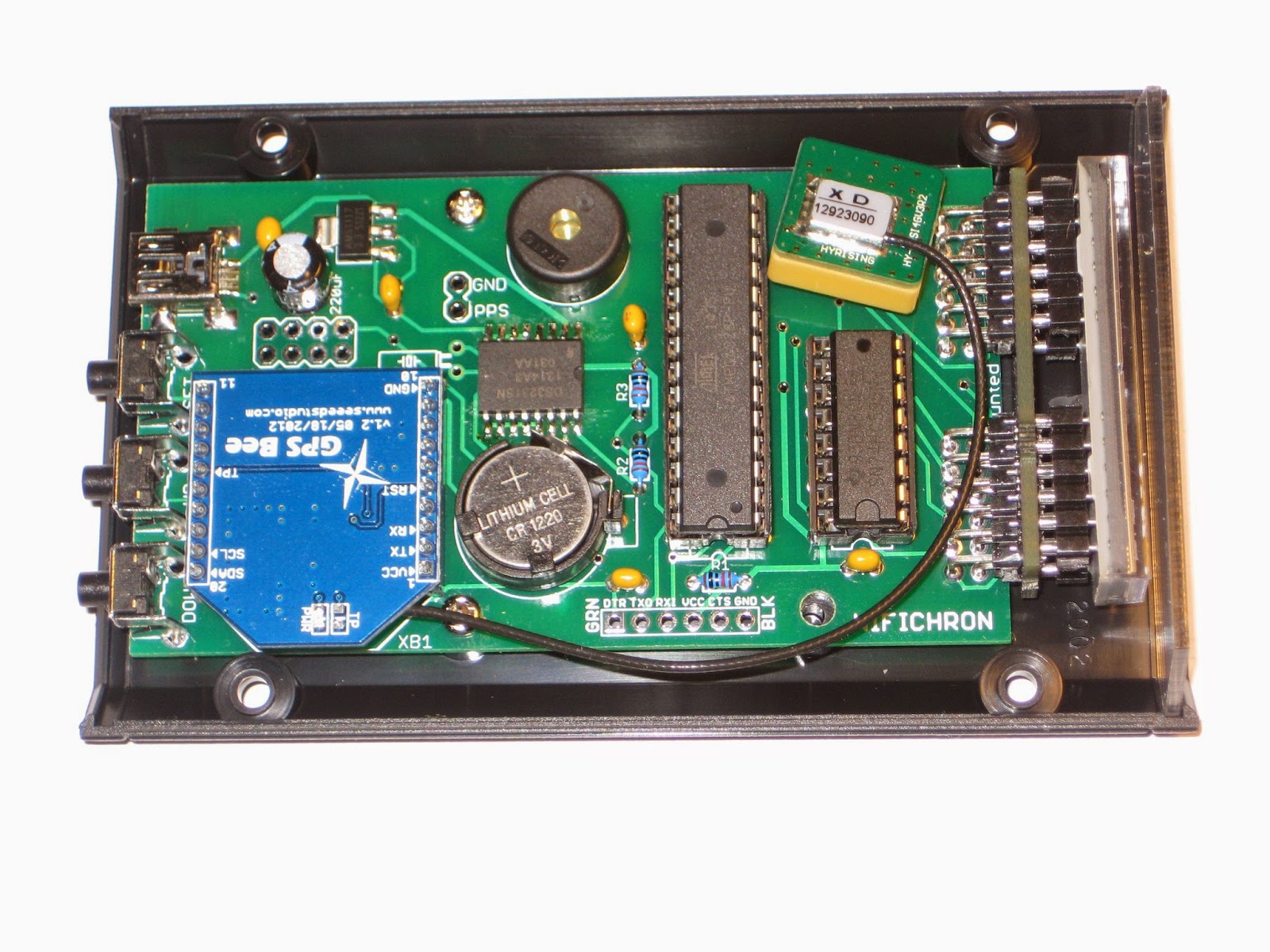- GPS-based time synchronization, by using the GPSBee;
- displaying messages sent from a Bluetooth device, by using the BTBee/BLEBee;
- displaying data acquired from an XBee/ZigBee network of sensors (not implemented yet);
Things did not go smoothly, without some drama though. Naively (I always seem to forget that there is a difference between theory and practice), I designed the XBee/ESP to connect to the serial port, with the expectation that once the development (including testing with debug statements to the serial monitor) is done, I will just plug in the serial module (either XBee of ESP8266) and things will work properly. Well, I had to re-consider this approach once again. Luckily, I had two pins left available (D7 and D17), which I could use for software serial. I re-wired those to the XBee/ESP and used the hardware serial for console communication. Until the next board revision, anyone wanting to follow will need to re-route a couple of traces manually, as shown in the photos below (cuts are red-circled).
A few details on my implementation of the GPS time sync (so that one doesn't need to look at the code to figure it out):
- user can set a timezone (stored in eeprom, default is -1); there is no (easy) way to determine if the timezone was set or not, since -1 (eeprom byte being 255) is a valid value;
- estimate the timezone from the longitude, assuming that a every 15 degrees is an hour difference;
- a difference between GPS estimated timezone and the user-set timezone of more than 2 hours would mean that the time is way off and the user did not set the timezone; in this case, blink the display; a difference of 2 hours or less would be acceptable (for many reasons, including summer-time, or variations from the "15-degrees-longitude-per-hour" approximation);
- in any case, the minutes and seconds are set from the GPS data;
- date and day are not set/synchronized at all (currently);
- the GPS sync is scheduled to happen every 10 hours (and also after a reset);
- a successful sync is indicated by an up arrow at the end of the scrolling date (e.g. March 29, 2015 ^).
As you can see in the photo below, the GPS antenna fits well in the case. It also works well: the GPS has good reception inside the house, 5 meters from the closest window.

















